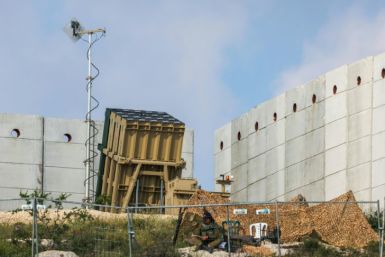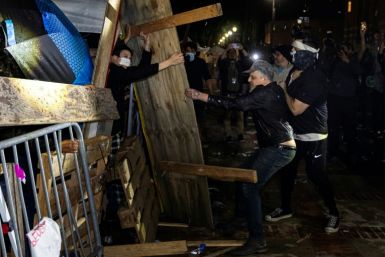Nazi Chambers That Gassed 250,000 Found In Poland's Sobibor

Gas chambers that killed 250,000 Jews at Sobibor have been unearthed by Polish and Israeli Holocaust researchers. On Wednesday, they found one of the eight death camps operated by Nazi Germany in occupied Poland.
Unlike other areas that called themselves "prison" or "labor" sites, Sobibor was among eight death camps. The Jews who were admitted here after being transported from Europe would be gassed after they were brought in. The death of inmates took place when there was murder by smoke from an engine that killed everyone within 15 minutes in these gas chambers "in torment, shouting," said David Silberklang, a historian with Yad Vashem, to Reuters Television. "It is said that...the Nazis even bred geese in order to drown out these shouts so that prisoners could not have heard these shouts, these torments."
The Germans closed the camp in October 14, 1943, when 300 of the 600 prisoners escaped with axes and knives. About 12 SS officers were killed, when some of the prisoners worked out a plot luring camp guards with promises of expensive stolen material, and then killed them in mine fields. Most of the Jews were shot. After World War II, only 52 survived.
Nazi forces tried to erase all traces of the camp's existence. An asphalt road was laid over the top of the site after SS leader Heinrich Himmler tried to destroy it. Much of the area was "dismantled" during the war. The Nazis even planted the site with crops.
Although it has always been clear to Israel's holocaust researchers from Yad Vashem and the Majdanek State Museum in Poland that Germans operated the gas chambers at Sobibor from April 1942 to October 1943, they have only now located the exact spot after eight years of searching.
However, there are many questions to which they have not found answers. "Any small piece of information we can add to our knowledge is a great thing," said Yoram Haimi, an Israeli archaeologist, who spent eight years digging here. Earlier, he had said that "I feel like I am an investigator in a criminal forensic laboratory. After all, it is a murder scene."
Some interesting areas of the place include a rectangular building with brick walls, but divided into four chambers. There was a garrison area and three camps. The archaeologists explored the site beneath the road and found rows of bricks, four pieces deep. They have determined that this is where the walls of the gas chambers once stood.
They have also found a mass of personal items that included gold teeth and jewellery. One of the rings had a Hebrew inscription that said: "Behold, you are consecrated unto me." David Silberklang, a historian with Yad Vashem, pointed out that the new discovery would give them an idea about the numbers killed, and what the Jews underwent after the killing.






